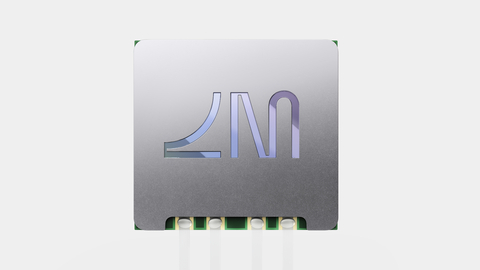Intelligence Advanced Research Projects Activity (IARPA), known for investing in research that tackles some of the most difficult challenges in tech today, is funding a $4.8 million project spearheaded by Boston University College of Engineering, the Harvard John A. Paulson School of Engineering and Applied Sciences, and Lightmatter, the leader in photonic computing,
This press release features multimedia. View the full release here: https://www.businesswire.com/news/home/20220208005509/en/

Lightmatter has developed photonic processors that are faster, more energy efficient, cooler, and more environmentally friendly than any other conventional processor in existence today. (Graphic: Business Wire)
The project’s charter is to develop an Electro-Photonic Computing (EPiC) solution for Autonomous Vehicles (AVs), solving one of the biggest hurdles AVs face today – delivering high performance, low latency computing power that is also energy efficient. The global AV market is projected to grow to an $11 billion industry by 2028, according to Fortune Business Insights; however, a significant barrier to accomplishing that growth is the availability of on-board compute system that does not negatively impact vehicle range and battery life. Advancements in EPiC solutions are crucial for overcoming this challenge.
"The Autonomous Vehicle industry needs to overcome this major technical hurdle in order to truly improve driving range -- having powerful enough on-board computing power to support trillions of calculations per second, without consuming extreme amounts of energy," says Lightmatter Chief Scientist Darius Bunandar. "We're thrilled to be teaming up with Harvard, Boston University, and IARPA to fix that issue with Lightmatter's Electro-Photonic Computing solutions."
The project is funded by IARPA under the Microelectronics in Support of Artificial Intelligence (MicroE4AI) program. The Lightmatter team is led by Dr. Darius Bunandar, the Boston University team is led by Prof. Ajay Joshi, and the Harvard SEAS team is led by Prof. Vijay Janapa Reddi.
How it works:
To operate safely, AVs utilize a myriad of sensors that generate data, requiring trillions of calculations per second. Sensors may include RADAR, LIDAR, cameras, and other driver assistance devices. Low-power consumption is a crucial challenge that the AV market faces to deliver competitive vehicle range and performance.
Increasing the number—or the resolution—of sensors is needed to deliver Level 4 and higher autonomous capability. However, deploying more sensor units in AVs is not an option, as it would increase power usage of current transistor-based computers, which already consume a significant fraction of the power available to the vehicle.
In the past, compute performance improvements guaranteed by technology scaling, enabled incremental improvements of the computational capacity of transistor-based computers. However, a slowing of the rate of improvement based on technology scaling is creating a widening gap between compute performance and system need. This means that deploying advanced algorithms, such as deep learning in AVs, requires a new paradigm in computer design that exploits not only innovative architectures but also radically novel physics.
The team’s hybrid electro-photonic approach has been motivated by the development of photonic chips that compute using photons, not electrons, at speeds on the order of tera operations per second, while consuming much less energy. A critical competitive feature of the team’s approach is the ability to fabricate photonic chip based compute systems using standard semiconductor fabrication and OSAT processes within existing manufacturing facilities.
In the proposed EPiC system, photonics is used to perform large matrix computations, while electronics is used for performing non-linear operations and storage. In AVs the EPiC system is fully integrated with the sensors, and together perform perception, mapping, and planning while overcoming the power and performance limitations of electronics-only computers.
About Lightmatter
Lightmatter is leading the evolution of computing to reduce its impact on our planet, while also enabling the next giant leaps in human progress. By unifying the unique properties of light as an ideal carrier of information, with the interoperability of electronics, Lightmatter creates photonic processors and interconnect that are faster, more efficient, and cooler than anything else on earth.
View source version on businesswire.com: https://www.businesswire.com/news/home/20220208005509/en/
Contacts
Delaney Simmons
lightmatter@strangebrewstrategies.com












